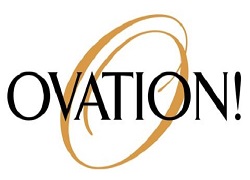Submitted by: Lisa Dyer
Collaborators: Jason Ciaschi, Rob Meister, Clint Miller, Frank Sampson, Katie Wilson, and Betsy Yost
School: J.R. Tucker High School
Summary
Producing a musical takes collaboration across numerous subject areas, and that’s just what was done in the fall of 2010 for AIDA. In the summer, the theatre teacher worked with the technology teacher on set designs and plans. The theatre teachers also worked alongside the choir teacher to ensure that students learned both choral and instrumental music. Art teachers worked with students on promotional materials in addition to mural work on the set. Theatre students made video trailers to publicize the show and made up the crew and ran the show during the run. This production exhibited the best that the fine and technical arts classes have to offer bringing students real-life exposure to and application of 21st Century Skills.
TIPC Ratings
APPROACHING – Students had some difficulty manipulating the technology due to computer imaging problems but demonstrated resourcefulness in completing the technological tasks. Students were also exposed to new technologies, some not related to computer software like using power tools for the first time during the set construction day and learning how to manipulate eight wireless headset microphones simultaneously or design a light plot for a full scale musical. Students showed a definite interest and drive to learn and eventually master the digital tools at their disposal.
To prepare for the assignments, students utilized the internet to find answers to questions regarding using the editing software and also used books and other materials to find out more on Ancient Egypt and Hieroglyphics to make the artwork historically accurate and relevant.
IDEAL/TARGET – The reason this show was so successful on so many levels can be directly attributed to the excellent communication and collaboration skills of the students and teachers involved in the production. The various groups worked well with each other, complimented each other’s strengths and minimized weaknesses. Students and teachers trusted each other to carry out tasks and follow through on jobs that needed to be completed.
The majority of student communication was face-to-face. However, students utilized personal technologies such as text messages, emails, and facebook posts to coordinate schedules and meet outside of rehearsal to practice choreography and music.
The run of the show included four performances open to the public. There were between 250 and 450 people in the audience each night including students, alumni, parents, friends, groups from retirement homes, groups from area middle schools, and members of the general public. To evaluate the performances, all theatre students wrote critiques for grades analyzing what they enjoyed and what they thought could be improved about the show and why.
In addition, students generated a multitude of oral feedback. It became apparent that the aspects that needed the most improvement concerned the lighting and the sound system. These are facets that are out of student control.
IDEAL/TARGET – The production of a musical is never without obstacles, and the cast, crew, and production team for AIDA constantly used critical thinking to circumvent problems and collaborated to work through problems that did surface. Technology students worked through budget and material constraints to alter an original design and arrive at the actual plan used during set construction. Theatre students worked through issues with a shortage of lighting instruments to find a way to illuminate the entire stage and elicit the appropriate mood and tone of the show.
Students working on the light and sound crew used the manual for the boards to help them work with the equipment, but most troubleshooting came from open discussions and clearly communicating problems and proposing solutions.
IDEAL/TARGET -The essence of musical theatre revolves around creativity and innovation. The students and teachers involved in this production worked together to take words and notes on a page and create an experience that tugged at the emotions of an audience that ranged from elementary students to retired citizens. Beyond the experience that was given to the audience, the people involved in the success of a production take the lessons learned and their experiences with them to future projects. Working on a theatrical production behind the scenes or on the stage gives students a breadth of knowledge that they can apply to their lives both inside and outside the classroom. Theatre is an all-encompassing art form that embodies 21st Century Skills in its core. It connects the performing arts with visual and technical arts; it connects with history and written and oral language arts; it connects geometry with physics; and theatre connects people.






